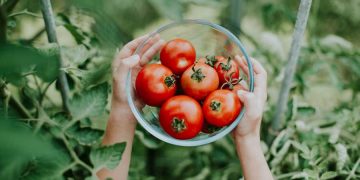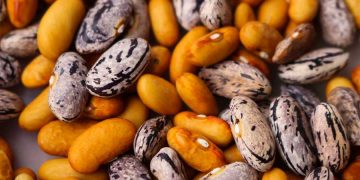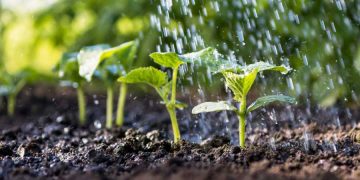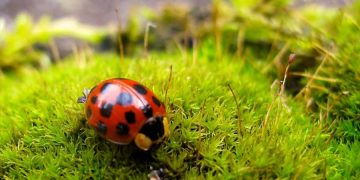In most cases, larger pots are better if you plan to over-winter your herb garden. Pots that are 16”-20” in diameter will allow your herbs to grow into fairly large plants while you continue to harvest them. For over-wintering, choose plastic pots. You can dress up the area with some smaller terracotta or other decorative pots, but plastic is weather safe and will help protect the roots through the cold.
Starting with a high quality container soil gives your herb garden the best start. Each year it’s a good idea to scratch in some good compost and replace the soil completely after a few years. Regular feeding throughout the gardening season will encourage healthy growth and strong production.
The best site for your herb garden is near the kitchen. You aren’t going to love traipsing around in the rain to find herbs at the back of your property. Knowing that your kitchen garden is close by will encourage you to snip away when your meal needs a little extra va-va-voom.
Some herbs like it sunny, hot, and dry, while others prefer a cooler, shadier location. When you choose your plants think of where you are going to place your herb garden and select accordingly.
There are just so many herbs out there, so the best place to start is to decide what you love and will use. Next, check out your local nursery or ask neighbors to find ideas that just may inspire a new favorite.
Here is some information on just a few of the perennial herbs you can grow in your garden.
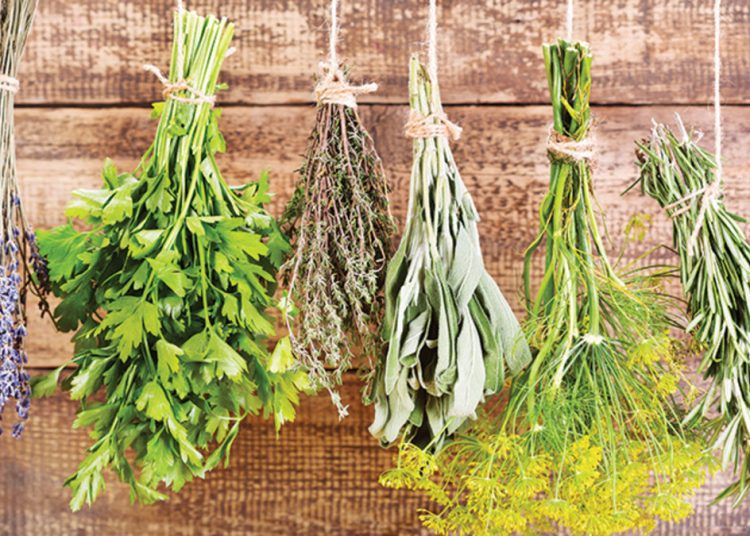
Mint, Lemon Balm & Oregano: mint is a fast-growing and spreading herb that, while wonderful for teas, cooking and cocktails, can quickly take over the garden. For this reason, mint is best grown in containers. The same is true for lemon balm and oregano. Grow these three in large containers and you’ll always have enough.
Rosemary: in milder areas rosemary will overwinter but in cooler climates you should bring plants in for the cold season.
Egyptian Walking Onions: fun alliums that have a mild garlic flavor. They set bulbs up at the top of the plant which becomes heavy, flops over, and plants itself in the ground.
Chives: are so prolific that you’d be hard pressed to find a gardener nearby who won’t give you a chunk to plant. The pretty purple flowers freeze well and will add a mild onion flavor to soups and dressings. Chive-flower vinegar, anyone?
Tarragon (French): a sweeter herb with more of an anise flavor that tastes great on chicken or, again, in vinegar. Don’t be fooled by packets of seeds sold as Russian tarragon, it doesn’t stand up in flavor to the French.
Salad Burnet: with a light cucumber flavor, salad burnet is great in (you guessed it!) salads. Leaves can be added to the bowl, or use them to make a flavored vinegar or dressing.
Thyme: a wonderful culinary herb for most, but I don’t like the taste. I do love the creeping versions growing in between pavers though. Check out great cultivars like lemon thyme and woolly thyme, which are exactly what you would expect them to be from their names.
Arugula: wild arugula has a peppery flavor and hardy temperament. Given enough depth for the long taproot, arugula will produce a small shrub of leafy greens to add to salads and sandwiches.
Chamomile: this beautiful herb has just the most heavenly scent. Dry the flowers for a sleepy-time tea or use them in natural bath products (like this Cold-Process All-Natural Handmade Soap).
Saffron: this expensive herb comes from the bright orange stigmas in the center of the saffron crocus. Pluck the stigmas off frugally, as each flower only produces three of them. This explains why saffron is so darn expensive. You may not be able to grow more than you will use in one recipe, but that’ll be one delicious paella.
Bay: those large leaves used in soups and stews come from the bay laurel, which is typically trained into a large tree that is as slow growing as it is beautiful. If you have a friend with one or a spot in the garden, you will never run out of dried bay leaves as a mere few adds a lot flavor.


